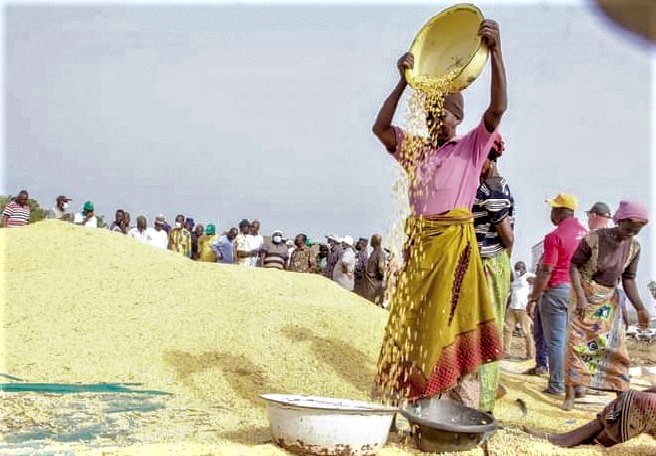A rice mill located at Kpekparigu-Kukuo in the Kumbungu district of the Northern Region – meant to facilitate the processing of local rice produced within the area – has been abandoned for years, checks by the B&FT have confirmed.
The mill, according to residents, has not been in operation for a long time; and this has adversely affected rice production in the area and the welfare of local farmers – who have resorted to selling the paddy at very low prices to defray mounting debt.
The residents believe revamping the mill facility would not only ensure sustainable rice production among smallholder farmers but also enhance business activities as well create jobs in the area.
This sentiment was articulated by a resident, Waliu Ibrahim, in an interview with the B&FT – saying the state of the mill is affecting women the most, as they have to travel long distances to have their rice processed.
“Our women have to travel all the way to Botanga to buy the paddy rice and carry it to Gumo, a suburb of Kumbungu, before getting their rice processed. Meanwhile, if the mill was functioning it would ease their stress,” he explained.
Mr. Ibrahim added that if the government or the private sector were to take up the project and have it revamped, the impact on the local economy would be immeasurable.
He believes such a move would also support the government’s One District, One Factory initiative and reduce the importation of rice into the country.
Agriculture is the main activity in the district and is practiced mainly at seasonal and subsistence levels, with a few engaged in irrigation farming around the Botanga dam.
It accounts for about 60 percent of the district’s labour force, which reflects the agrarian nature of its economy.
The district, which should have a bigger machine to mill tonnes of rice, has only a small rice mill with severely limited capacity.
Botanga is known to be a key producer of rice with an irrigation scheme available to ensure year-round rice production; but unfortunately, lack of proper maintenance has led to rot and resulted in eventual abandonment.
The rice sub-sector support project by the Ministry of Food and Agriculture is also in line with the ministry’s strategy of facilitating the production of food crops to attain food self-sufficiency, output processing, and marketing systems.
Rice has been identified in the Food and Agriculture Sector Development Policy (FASDEP) as an important food crop that should be given special attention for food self-sufficiency, but the case is different at Kumbungu.
FASDEP emphasises the sustainable utilisation of all resources and commercialisation of activities in the sector with market-driven growth in mind.
It however targets only a few commodities for food security and income diversification, especially for resource-poor farmers.
Efforts to get officials from the Department of Agriculture in the district to respond to questions about the reason for the closure of the facility have proved futile.








